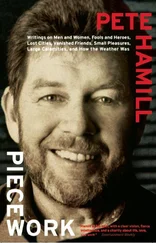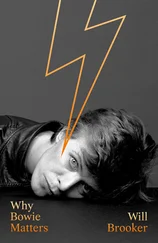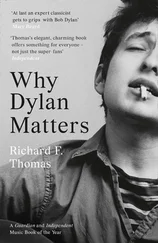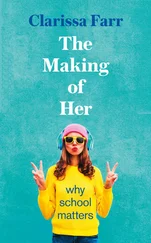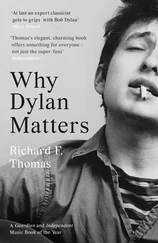“You can’t imagine now how big Crosby was,” Sinatra said in the 1970s. “He was the biggest thing in the country. On records. On the radio. In the movies. Everybody wanted to be Bing Crosby, including me.”
Crosby did understand the microphone — and the camera. He knew he didn’t have to hit the second balcony with the belting style forced upon Broadway singers. The microphone permitted a more intimate connection with the audience. He didn’t have to italicize his acting in movies, the way theater-trained actors did; the close-up allowed him to be natural. Crosby was relaxed, casual, and very American.
The story of Sinatra’s inspiration by Crosby has been told in all the biographies: how he would sing along with the records, and how one night in 1935 he took his best girl, a dark-haired beauty named Nancy Barbato, to the Loew’s Journal Square theater in Newark to see Crosby in a live appearance. On the way home he said to her, “Someday, that’s gonna be me up there.”
Nancy Barbato, the seventeen-year-old daughter of a plastering contractor, was skeptical; on an average Saturday night that year, about a million young American males must have been saying roughly the same thing. But Frank Sinatra had begun to believe in his own possibilities. This was America, wasn’t it? And in America anything was possible. So he watched Crosby and listened to him, simultaneously opening himself to other kinds of music too. Crosby’s stardom obviously inspired Sinatra, but in the deepest, most substantial ways, his musicianship did not (the truest heirs to the Crosby singing style were Perry Como and Dean Martin). The most important and enduring influence on the young Frank Sinatra was swing music.
Beginning with Benny Goodman’s breakout in the mid-1930s, and steadily gathering force, this jazz-inspired big band music was soon cutting across all racial and ethnic lines, becoming the music of the generation dominated by the children of immigrants. The growth of radio as a national medium accelerated this process: white kids could hear Count Basie or Duke Ellington; black kids could listen to Goodman (who included black musicians Lionel Hampton and Teddy Wilson in the band); kids of all ethnic backgrounds, including Japanese and Mexican Americans, formed their own swing bands. So although Sinatra was not directly influenced by jazz, he did become the most enduring singer to emerge from the era of the big bands, which could not have existed without jazz. Their powerful, driving, confident sound was emerging at the same time that Sinatra began to sing for audiences.
“I used to sing in social clubs and things like that,” he told the British writer Robin Douglas-Home in 1961. “We had a small group. But it was when I left home for New York that I started singing serious. I was seventeen then, and I went around New York singing with little groups in roadhouses. The word would get around that there was a kid in the neighborhood who could sing. Many’s the time I worked all night for nothing. Or maybe I’d sing for a sandwich or cigarettes — all night for three packs. But I worked on one basic theory — stay active, get as much practice as you can.”
The family resisted. Marty was furious when Frank dropped out of high school in his senior year. He predicted that his son would be a bum. Dolly once threw a shoe at him in his room, expressing contempt for his dreamy ambitions; the shoe hit a photograph of Bing Crosby. Such reactions were not unique to the Sinatra family; many immigrant Catholic families discouraged the artistic ambitions of their children, for decent reasons: they did not want them to be disappointed and hurt. It was safer to take the cop’s test or acquire a real trade. Among the Irish, we called this the Green Ceiling; it was enforced by the question, Who do you think you are?
When it was clear that her son was serious, Dolly gave in, paying $65 to get him a sound system that included a microphone. This was the equivalent of buying a trumpet for Miles Davis. Frank Sinatra had his instrument at last. Almost immediately, the gear made it easier for him to find places to play: amateur contests, bars, high school graduations. The Sinatra legend includes the tale of the formation of the Hoboken Four, winning first prize in 1935 on a popular radio show called Major Bowes’ Original Amateur Hour . The winning group went off together on a Major Bowes tour. For the first time, Sinatra was being paid to sing. He and the rest of the group cut up $75 a week.
“We had turned pro,” he said later. “Bowes was the cheapest son of a bitch in America, and a lowlife besides, but we were singing for money.”
With Major Bowes in command, the Hoboken Four traveled all the way to California, an enormous journey for kids whose world until then had been limited to Atlantic City to the south, New York across the water, and the towns and roads of northern New Jersey. Frank Sinatra was seeing America, which until then was something he had only read about or had seen in the movies. And he was hearing swing bands on the radios in every town.
“A lot of it was crummy hotel rooms, buses, and trains,” he said later. “But still, you saw how goddamned big the country was. And you could hear the same music everywhere. Bing, of course. But also Benny Goodman, Tommy Dorsey. You heard them more than you ever heard the national anthem. They were America.”
The Hoboken Four did not survive the journey; they broke up soon after their return. But Frank Sinatra kept moving, working part-time as a plasterer (for Nancy’s father), unloading crates of books for a wholesaler, catching rivets in a shipyard, ending up in 1937 as a singing waiter in a place called the Rustic Cabin in Englewood, directly across the Hudson River from midtown Manhattan. The pay was $15 a week, plus tips, but the newly completed George Washington Bridge led right over the river to Manhattan, the city of dreams.
The management could not afford a big band to play the music the rest of America was hearing. But Frank Sinatra was singing. Those who later claimed to have seen him at the Rustic Cabin could fill Yankee Stadium. But one who did see him was the trumpet player Harry James, who had just formed his own swing band after leaving Benny Goodman. He needed a boy singer. James heard Sinatra singing on one of the many radio shows that used him, unsponsored programs for which the singer was not paid (or, received 75 cents a performance). He decided to drive over to the Rustic Cabin for a look. Among other songs, Sinatra performed his version of “Begin the Beguine,” a big hit for Artie Shaw. James was impressed, explaining later, “I liked Frank’s way of talking a lyric.” He gave Sinatra the job. That was the turning point, and without changing his name to Frankie Satin, the young man was on his way.
A few months earlier, on February 4, 1939, he had celebrated a raise from the Rustic Cabin to $25 a week by marrying Nancy Barbato in Our Lady of Sorrows in Jersey City. They moved into an apartment on Audubon Avenue in the same city. Frank Sinatra would never live in Hoboken again.
Now earning $75 a week, Sinatra took Nancy on the road with the Harry James orchestra. Every night he would hear James play “You Made Me Love You,” his big hit with Goodman. Every night he would listen to swing music that ripped and roared, a rallying music in a bad time, and then ask questions of the musicians. How did that sound happen? On this record, what is this instrument? He was acquiring theory and practice.
The young musicians in the James band traveled all over the country, doing one-night stands, eating poorly, sleeping on buses, sometimes even returning to New York for gigs at Roseland. By all accounts, Frank Sinatra was a happy young man. He had found the family he was looking for, with his wife at the center. It was a family of men bound together by music, with ambitions far beyond the narrow goals of the streets of Hoboken. Nobody in this itinerant family dreamed of gaining lifetime employment in a shipyard or joining a New Jersey fire department.
Читать дальше



